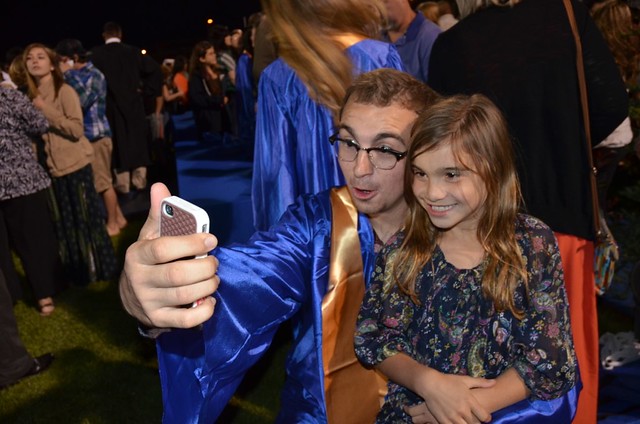(The following narrative was presented to the school board on the initial discussions related to developing the 2014-2015 School budget. This narrative preceded the talks related to budget considerations involving technology.)
Technology, Our Schools, and Learning
We live in a world now where 2.5 billion people have become connected in just under two decades, a number that is expected to double in the next five years. Marc Andreesen, the inventor of Netscape, the first popular Internet browser, describes our shift due to technology in no uncertain terms, “The spread of computers and the internet will put jobs in two categories: People who tell computers what to do, and people who are told by computers what to do.” In the near future, for many of our students, jobs will come not through answering an ad, but through being found online by companies looking for specific skills.
The National Council of Teachers of English take on defining 21st Century Literacies defines successful participants as being able to:
- Develop proficiency and fluency with the tools of technology;
- Build intentional cross-cultural connections and relationships with others so to pose and solve problems collaboratively and strengthen independent thought;
- Design and share information for global communities to meet a variety of purposes;
- Manage, analyze, and synthesize multiple streams of simultaneous information;
- Create, critique, analyze, and evaluate multimedia texts;
- Attend to the ethical responsibilities required by these complex environments.
Two Main Themes
I. Using technology to facilitate student learning.
This is just as much about teachers using technology to teach as it is student using technology to learn.
II. What students should know and be able to do with technology by the time they enter high school.
Using Technology to Facilitate Student Learning
Strategies for EL and special education focus on differentiating instruction to students, focusing on strategies that engage and play to the student’s strengths. These include common strategies such as the use of visuals. The use of technology amplifies this strategy and facilitates the use of visuals and multimedia in the form of audio, video, and interactivity. Digital resources and instructional content can be easily shared and distributed and collections of these tools can be built up fairly quickly. We know that these specific strategies benefit our small subgroups but are just as important for general education population.
Other examples of technology facilitating student learning include improved remediation options using resources such as the Khan Academy; and improving the logistics of teacher-student and student-to-student workflow via digital tools such as Google Apps. This can result in a reduction of physical materials such as paper, minimizing the logistics required in collaboration and peer review tasks, and increase opportunities for assessment and self reflection. The assessment and evaluation process can more easily include digital components, digital portfolios, and formative assessments that can be easily distributed, recorded, and evaluated at much more often intervals than in classrooms without technology.
Technology augments and amplifies a teachers skills, but is not a substitute for an experienced teacher. Decision-making and interventions in complex, dynamic high stakes environments, such as our public schools, requires skilled professionals with the right tools.
Orchestrators of learning empowered by technology have many more options for fulfilling their charge than teachers who do not use technology. They can:
- Keep students deeply engaged in learning -- connecting personally relevant content, customized options for difficulty level, alternative learning pathways, and choices for support and guidance
- Improve students’ understanding of complex concepts by bringing animations, simulations and visualizations into learning -- and yes, videos of expert explainers.
- Increase the quantity and quality of feedback during learning, at precisely the time that adjustments and adaptations made by either the teacher or the technology can make a difference in learning outcomes
- Provide students’ access to people, courses, materials, data sets, research and primary source documents available online and often for free
- Enable students to connect and participate globally as they engage in problem solving with other learners around the world
- Put the same technology tools professionals use in the hands of students for writing, publishing, organizing, producing, researching, composing, visualizing data and more.
What We Want Students To Be Able To Do With Technology
(This is an attempt to create an elevator pitch regarding what we would like students to be able to do with technology. The District Technology Plan is much more detail. What follows is four main ideas that can be easily remembered and shared. Within those four main ideas are many subtopics.)
1. Students are able to navigate digital content and respond at all levels of Bloom’s taxonomy in an developmental age appropriate manner.
2. Students will be able to demonstrate their learning by creating original digital content.
3. Students will be able to safely navigate their digital world, understand ethical and responsible use, and build supportive digital ecosystems for lifelong learning.
4. Students will be able to communicate the importance of technology and the fundamental components of our digital world.
Resources
(Anderson & Krathwohl, (2001), This figure illustrates the cognitive process dimension of the revised version of Bloom's taxonomy in the cognitive domain. http://en.wikipedia.org/wiki/File:BloomsCognitiveDomain.svg
Brynjolfsson, Erik and McAfee, Andrew, (December 11, 2012), Jobs, Productivity and the Great Decoupling, http://www.nytimes.com/2012/12/12/opinion/global/jobs-productivity-and-the-great-decoupling.html
N.A. (2013, Feb. 22) NCTE Framework for 21st Century Curriculum and Assessment, National Council of Teachers of English. http://www.ncte.org/positions/statements/21stcentframework
Richardson, Will and Mancabelli, Rob, (2013), Preparing Students For A new World of Work in the 21st Century, http://www.brightbytes.net
Stanislaud County Office of Education, (2013) ttp://www.stancoe.org/SCOE/iss/common_core/overview/overview_depth_of_knowledge/dok_chart.pdf




.JPG)





.jpg)